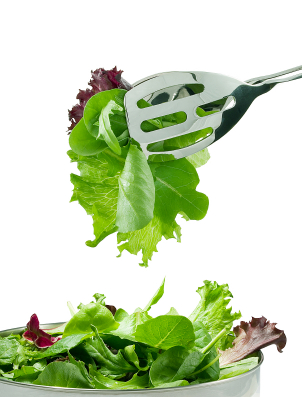Holiday gatherings among families, close friends, and co-workers all center around food, and lots of it! If you’re committed to a healthy lifestyle, you may find the holidays especially challenging, as you’re often surrounded by those who eat indiscriminately, sampling anything edible that comes across their face.
This holiday season, here are a few tips to maximize your nutrition with minimal sacrifices on your favorite, exciting holiday foods and drinks.
1. Stay hydrated with unique water alternatives.

Keeping with the indulgent attitude of the holidays, you can easily take nutrition to a more exciting level by choosing drinks equally or more hydrating than water. It’s a little known fact that during the holidays, people tend to be dehydrated. When water gets to be a bit boring, rooibos tea is a great option.
Just as delicious hot as it is cold, this caffeine-free drink is a refreshing way to stay hydrated. Part of the legume family originating in South Africa, rooibos is full of antioxidants like aspalathin and nothofagin.
It also contains cancer-fighting compounds like quercetin and luteolin, and is packed with essential minerals like manganese, zinc, potassium, calcium, and magnesium. Add lemon and your favorite sweetener and serve over ice to make a refreshing cooler, or add to boiling water for a comforting, full-bodied wintry drink.
2. Determine which foods are naughty, and which ones are nice.

Yes, most holiday foods aren’t the healthiest, but the key to preventing binge eating is having a strategy that leads to satiety (feeling “full”) with the least amount of food intake. One way of doing this is to pick which of the foods in front of you have the lowest energy density (AKA calories) but have the highest volume (loosely translated, takes up the most room on your plate).
Salad greens, fruits, and most vegetables, and broth-based soups are good examples of low energy-density, high-volume foods.. Eat those first, and choose not to eat (or at least, save until the very end, if you have room) the foods with the highest energy density and lowest volume.
Another strategy is to mentally pick a “flavor theme” for that particular meal and only eat foods in that category. For example, if you pick “spicy,” then fruitcake is out of the question, but your co-worker’s famous spiced eggnog is up for grabs.
Research suggests that different flavors- sweet, salty, bitter, etc- trigger different appetite centers in the brain, and if we simultaneously activate them all through a variety of foods, we’ll keep eating until all appetite centers register fullness. By sticking to one particular flavor, we’d activate fewer appetite centers, thus reaching satiety sooner.
3. Make your own healthy holiday food and drink.

When it comes to nutrition, what you don’t know actually can hurt you. Stealth sugars and fats in foods account for most of the weight gain experienced in the holidays. Let’s face it: if you actually knew how much sugar was poured into your sister’s Christmas cookies, or the kind of bread your neighbor used for his homemade pumpkin-bread pudding, you’d probably think twice about how much you’d end up eating.
These days, whether you’re vegetarian, vegan, or a raw foodist, you can find healthier alternatives to nearly all cooking or baking needs, eliminating the need to sacrifice traditional holiday foods. If you love pastries, for instance, try gluten-free flour alternatives, like coconut flour. Make hot chocolate from pure cacao, and drop some peppermint oil to make it unique. Shop for seasonal fruits and make your own holiday smoothie.
Look through thousands of online recipes, or ask health-conscious friends for their favorite ingredient substitutes. By making your own holiday treats, you know exactly what’s in your food, and you’ll know whether to stop eating or if it’s safe to eat just one more.

Leave a Reply